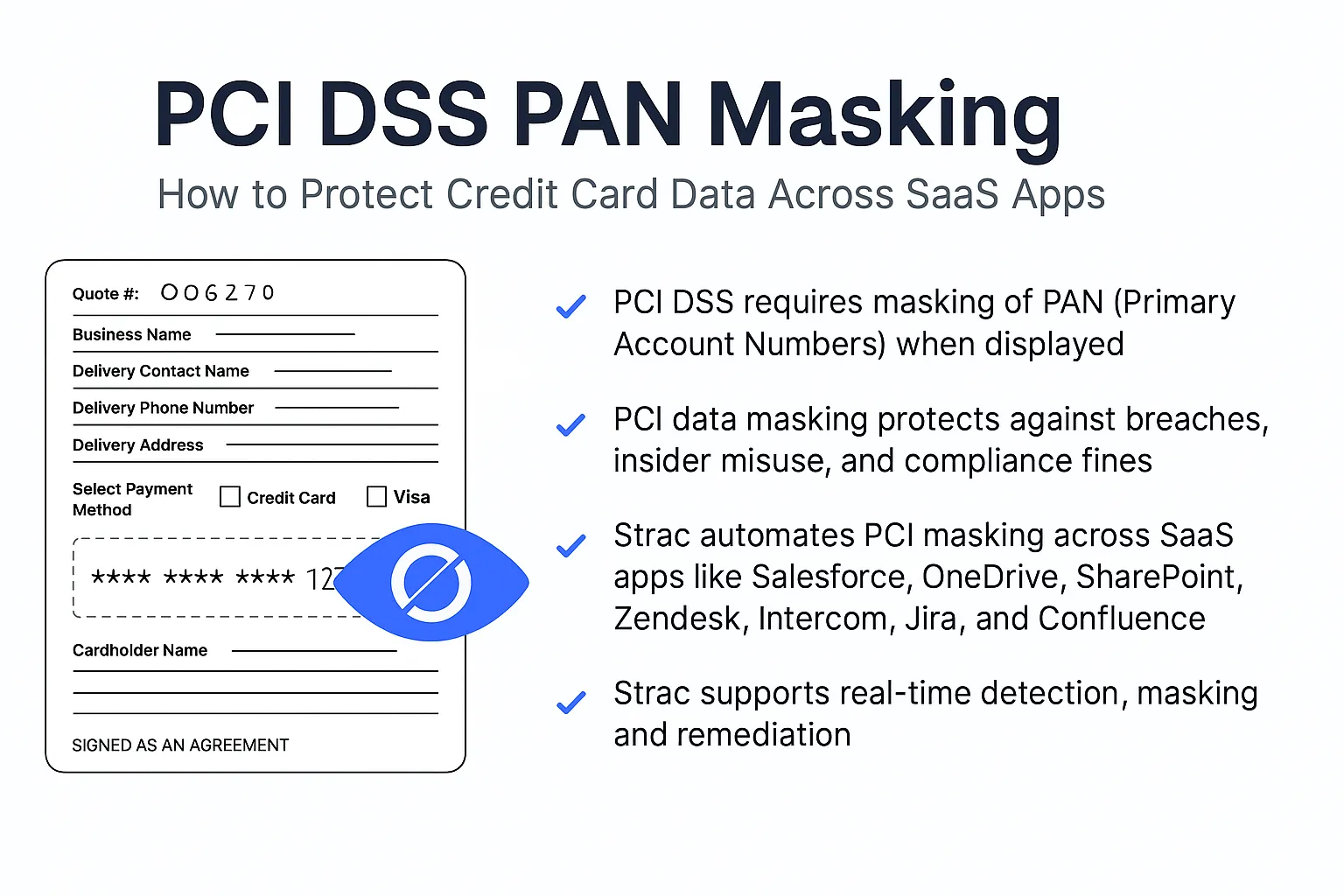TL;DR:
- Strac Log Redactor is a Data Discovery & DLP software that redacts sensitive data elements in logs.
- It allows authorized users to view logs in Strac UI Vault.
- Compliance, Risk and Security officers get audit reports of who accessed what logs.
- Strac is designed to automatically identify and redact sensitive data elements.
- Visit https://www.strac.io/blog/strac-catalog-of-sensitive-data-elements for more details.
Identifying the Challenge of Masking PII Data in Logs
Businesses have application logs that contain sensitive data. That sensitive data needs to be redacted or scrubbed for following reasons
- Compliance: GDPR, HIPAA, CCPA and many other privacy laws enforce all customer sensitive data to be scrubbed/redacted/or not accessible after certain time period.
- Security: Insider attacks are common where employees who have access to customer's sensitive data lead to data exfiltration
This applies to logging services like AWS Cloudwatch, Datadog, NewRelic, Google Cloud Operations (formerly StackDriver), and any other cloud logging services.
How Strac Offers a Solution for Masking PII Data in Logs
Strac Log Redactor is a Data Loss Prevention (DLP) software. It masks (aka redacts) sensitive data elements in logs while still giving the opportunity to authorized users to view those logs in Strac UI Vault. A business can configure a list of sensitive data elements (SSN, DoB, DL, Passport, CC#, Debit Card, API Keys, etc.) to redact. Compliance, Risk and Security officers will get audit reports of who accessed what logs.
Take a look at Strac's directory of sensitive data items. Strac is designed to automatically identify and redact these elements. For more details, visit this link: https://www.strac.io/blog/strac-catalog-of-sensitive-data-elements.











.webp)














.webp)




.avif)


